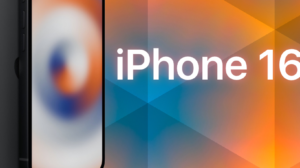Have you ever pondered why typing on your keyboard feels uniquely satisfying, or perhaps a bit too soft for your liking? The secret lies in the intricate world of keyboard mechanisms and design, a topic that combines the tactile, the technical, and the personal.
Key Highlights:
- Keycap Material and Design: The choice of keycap material, such as ABS or PBT, affects the texture and durability, with options for customization to match personal preferences in terms of feel and aesthetics.
- Stabilizers: These components are crucial for larger keys, ensuring smooth and even movement, thus enhancing the typing experience by reducing wobble and noise.
- Customization Options: Mechanical keyboards offer vast customization, including switch types, keycap designs, and even the keyboard’s physical layout, allowing for a tailored typing experience.
- Switch Types: The heart of the mechanical keyboard’s feel lies in its switches, offering choices from linear to tactile to clicky, each providing a distinct typing experience.
- Durability and Longevity: Mechanical keyboards are renowned for their durability, with high-quality switches capable of enduring tens of millions of keystrokes.
Dive into the Details
The journey into understanding the allure of mechanical keyboards versus their membrane counterparts reveals a blend of engineering excellence and personal preference. At the core of the mechanical keyboard’s appeal are the switches. They come in various types, such as linear, tactile, and clicky, each offering a different feedback and sound that cater to individual typing needs and preferences. The customization doesn’t end with switches; keycaps play a significant role too. Their material, shape, and texture contribute significantly to the overall feel of the keyboard. Profiles like DSA and SA offer unique shapes and heights, allowing for a customized look and feel.
Stabilizers further enhance the typing experience by ensuring that larger keys move smoothly and consistently, preventing annoying wobbling or uneven movement. The mechanical keyboard’s modularity allows for extensive customization, from the case and plate materials to the keycaps and switches, even down to writing your own code for programmable keyboards.
Mechanical vs. Membrane: A Comparison
While mechanical keyboards are celebrated for their customizability and tactile feedback, membrane keyboards have their place in the keyboard spectrum. They are typically more affordable and practical for those who prioritize cost over customization and tactile feel. Membrane keyboards might lack the moving parts of their mechanical cousins, making them cheaper and faster to produce, but they fall short in providing the same level of tactile feedback and longevity.
Choosing between a mechanical and a membrane keyboard often boils down to personal preference, use case, and budget. Whether you crave the customizable tactile feedback of a mechanical keyboard or the affordability and simplicity of a membrane option, understanding the nuances behind each type can greatly enhance your typing experience and overall satisfaction.



















Add Comment